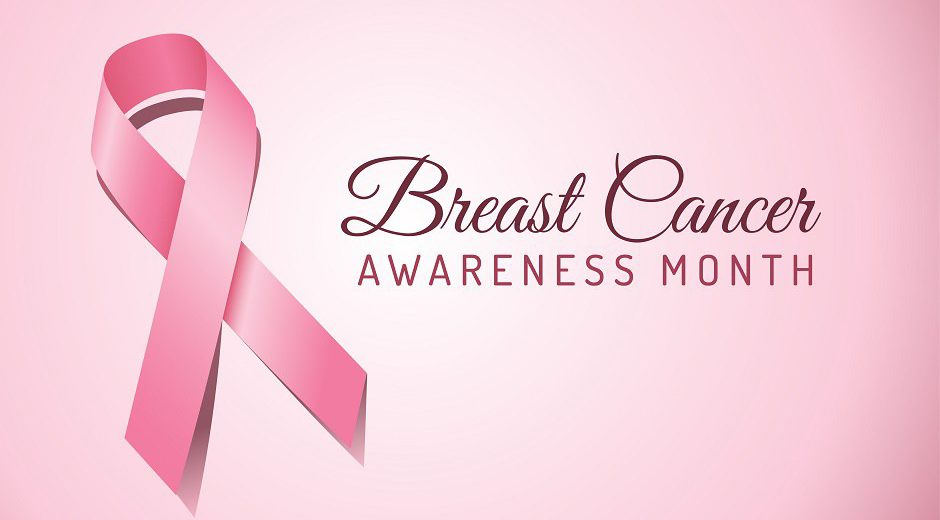That time of year has come again. That time when we see all those pink little ribbons, when we see all of our favorite sports team sport some pink clothing, and the plethora of charity walks and fundraisers. October is Breast Cancer Awareness month.
Everyone knows what Breast Cancer is Breast cancer, but did you know that there are different kinds of breast cancer? The kind of breast cancer depends on which cells in the breast turn into cancer.
Breast cancer can begin in different parts of the breast. A breast is made up of three main parts: lobules, ducts, and connective tissue. The lobules are the glands that produce milk. The ducts are tubes that carry milk to the nipple. The connective tissue (which consists of fibrous and fatty tissue) surrounds and holds everything together. Most breast cancers begin in the ducts or lobules.Breast cancer can spread outside the breast through blood vessels and lymph vessels. When breast cancer spreads to other parts of the body, it is said to have metastasized.
The most common kinds of breast cancer are invasive ductal carcinoma, and invasive lobular carcinoma. In invasive ductal carcinoma, the cancer cells grow outside the ducts into other parts of the breast tissue. Invasive cancer cells can also spread, or metastasize, to other parts of the body. In invasive lobular carcinoma, cancer cells spread from the lobules to the breast tissues that are close by. These cells can spread to other parts of the body as well. Like all cancers, Breast Cancer is a potentially fatal disease, so, as always, to help inform you on how to avoid this illness we have set up a list of tips that we have for you to help lessen your chances of contracting this illness.
1. Keep Weight in Check
It may be easy to tune out this tip because it is said so often, but maintaining a healthy weight always important. Being overweight can increase the risk of many different cancers, including breast cancer.
2. Physical Activity
Exercise is always a key component for good health, and women who are physically active for at least 30 minutes a day have a lower risk of breast cancer. Regular exercise is also one of the best ways to help keep weight in check, killing two birds with one stone.
3. Eat Your Fruits & Vegetables
A healthy diet can help lower the risk of breast cancer. Try to eat a lot of fruits and vegetables and stay away from too many processed foods.
4. Avoid Too Much Alcohol
Keep alcohol at moderate levels or lower (a drink a day or under). While moderate drinking can be good for the heart in older adults, even low levels of intake can increase the risk of breast cancer.
5. Don’t Smoke
Smokers and non-smokers alike know how unhealthy smoking is. On top of lowering quality of life and increasing the risk of heart disease, stroke, and at least 15 cancers – including breast cancer – it also causes smelly breath, bad teeth, and wrinkles.
6. Avoid Birth Control Pills, Particularly After Age 35 or If You Smoke
Birth control pills have both benefits and risks. The younger a woman is, the lower the risks are. While women are taking birth control pills, they have a slightly increased risk of breast cancer. Birth control pills increase your risk of stroke and heart attack, especially if a woman smokes. This risk goes away quickly after stopping the pill. However, long-term use can also have important benefits, like lowering the risk of ovarian cancer, colon cancer and uterine cancer. If you’re very concerned about breast cancer, avoiding birth control pills is one option to lower risk.
7. Avoid Post-Menopausal Hormones
Post-menopausal hormones shouldn’t be taken long term to prevent chronic diseases. Studies show they have a mixed effect on health and can increase the risk of some diseases and lowering the risk of others. Both estrogen hormones and estrogen-plus-progestin hormones increase the risk of breast cancer. If women do take post-menopausal hormones, it should be for the shortest time possible. Refer to your doctors for advice to determine what hormonal medications you should be taking and for how long.
Even if you follow all of these tips, it doesn’t mean you still don’t have a chance of being diagnosed with Breast cancer. That is why regular visits to your doctor and screening is so important. Studies show that breast cancer screening with mammography saves lives. It doesn’t help prevent cancer, but it can help find cancer early when it’s most treatable. For most women, regular mammograms can begin at age 40, and are recommended regularly after the age of 50.
With a couple of lifestyle changes and regular visits to your doctor, you can lower your risks of developing breast cancer, or catching it early on when still very treatable.





